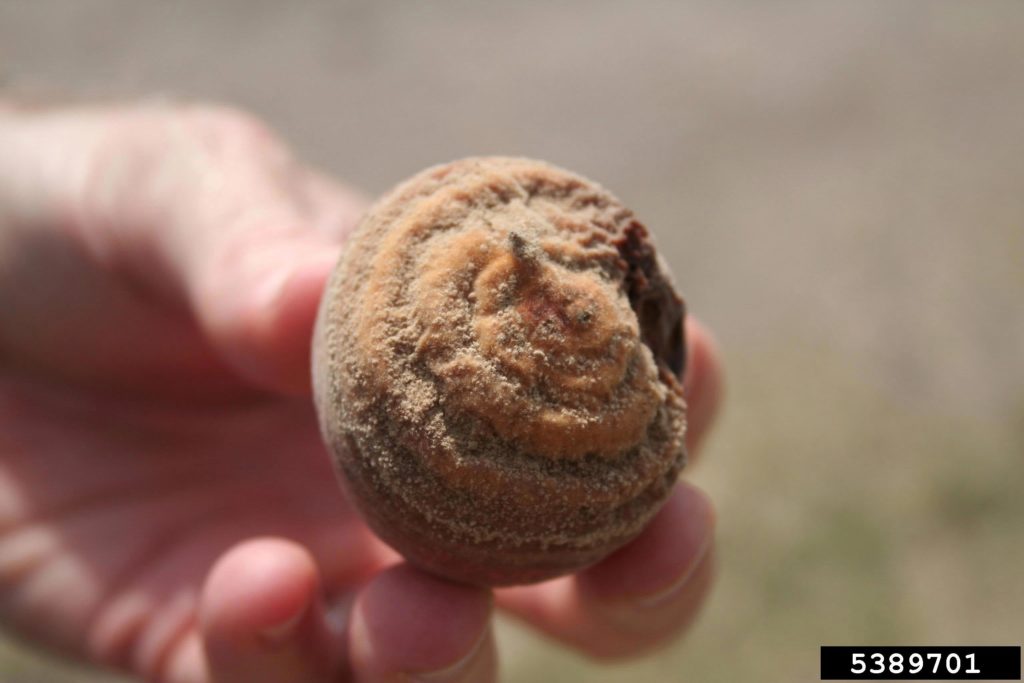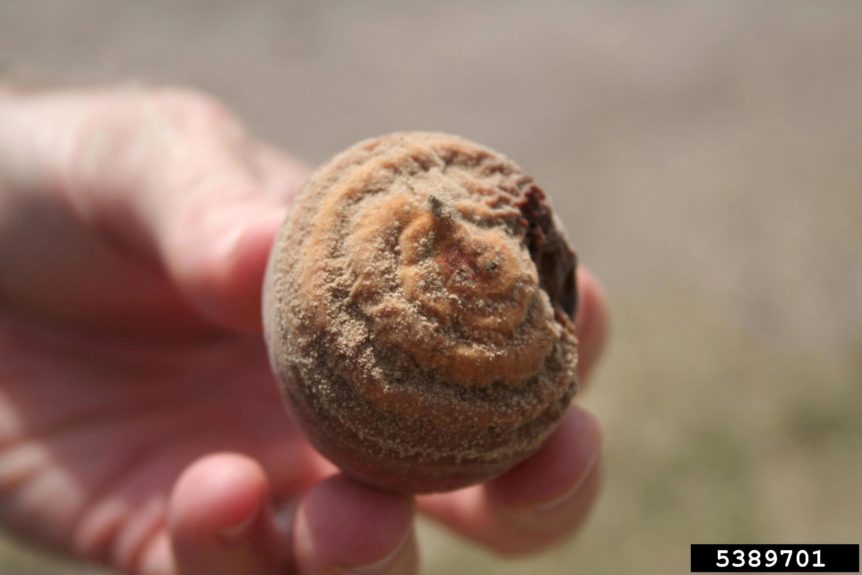
By Clint Thompson
Georgia peach producers are at risk every year of having their crop succumb to brown rot disease — either through fungicide resistance or looming regulatory hurdles.
Growers are successfully avoiding resistance with their current fungicide spray program, but potential regulations from the Environmental Protection Agency (EPA) have Phil Brannen, University of Georgia Cooperative Extension fruit disease specialist, concerned about the availability of certain fungicides in the future.
“The EPA continues to look at all of these products, and I am concerned that at some point they’re going to take some of these products off of the market. They’re putting a lot of pressure on some of the older chemistries, and there’s a lot of questions about these older chemistries,” Brannen says. “We’re going to have to continue to communicate to EPA about the importance of all the materials and that we must keep them all on the market. For instance, if we were to lose Captan fungicide, it would put a lot of pressure on the (newer) materials, and we’d have to utilize them. We know they would develop resistance, and it would be an absolute disaster for our market.”
Avoiding Resistance
If growers can avoid having specific fungicides stripped away by the EPA, the management plan is in place to successfully thwart brown rot disease while preserving specific classes of fungicides for years to come.
“We’ve had fungicide resistance for probably 25 years or longer to the demethylation inhibitor (DMI) fungicides. It hasn’t changed a lot in the last 25 years because of our management program,” Brannen says. “As far as the other fungicides that we utilize, the categories like the succinate dehydrogenase inhibitors (SDHIs) and the strobilurins (QOIs), to date, we have not confirmed fungicide resistance in Georgia.”
According to Brannen, growers try to avoid spraying any materials that will develop resistance until the preharvest phase, within 21 days of harvest. Though these materials are the most effective, they are utilized as little as possible. Chlorothalonil is used early in the season for scab with sulfur, and Captan is applied during the remainder of the season. Those products don’t develop resistance to brown rot or scab, but they don’t provide 100% control, either. Producers will switch over to the really effective products for brown rot at the end of the season.
“We’re just trying to utilize them as sparingly as possible, and that has worked. It’s really amazing how little resistance has developed. We know it can, but we’ve been able to prevent it by that program,” says Brannen. “With our program, we try to utilize (these big materials) as little as possible. Trying to utilize them once or twice per year, we have been able to avoid resistance and been able to use the DMIs if we incorporate them into a spray program where we spray the SDHI and QOI combination first and follow with the DMI. We can still use the DMIs. We’ve developed a system that we’ve put in place that actually works pretty well to prevent resistance. We just don’t want to let up.”
Damaging Disease
According to University of Georgia Extension, brown rot will attack flowers, stems and fruit of the peach tree. The disease causes blossom browning and wilting when it affects flowers. Stem infections lead to small, brown, elongated lesions, also known as cankers. These stem cankers can produce spores for the disease to spread.
Brown rot disease is so devastating in Georgia peaches that growers cannot fathom producing a crop without applying necessary fungicides. Georgia’s moist, wet climate is too conducive for the disease’s development. It starts infecting blossoms during bloom, and growers must spray all season long.
“Brown rot for peaches is the No. 1 disease we have in the absence of any kind of fungicides,” says Brannen. “If you don’t have fungicides for brown rot in the Southeast in our conditions, there will be a lot of years where we will not produce any peaches. If we have a really dry year, and when I say really dry I mean like drought, and no rain, especially pre-harvest for a long period of time, you may not see that much brown rot. That is a rare event.”
Brannen emphasizes that growers normally require a spray program that spans the entire production season.
“If you think about compound interest in a banking sense, this is a compound interest disease,” Brannen says. “It builds up and ramps up rapidly. You don’t want to let that happen. A little disease is not good early in the season.”
Brown rot’s potential in Georgia is for a major outbreak every season. Growers need to remain alert in spreading the fungicides out, so resistance remains a threat and not a reality.










